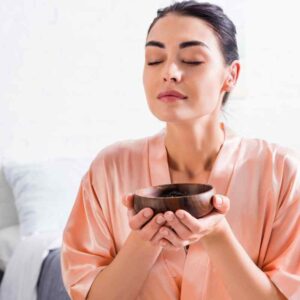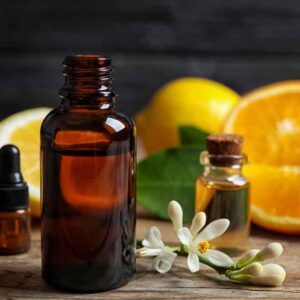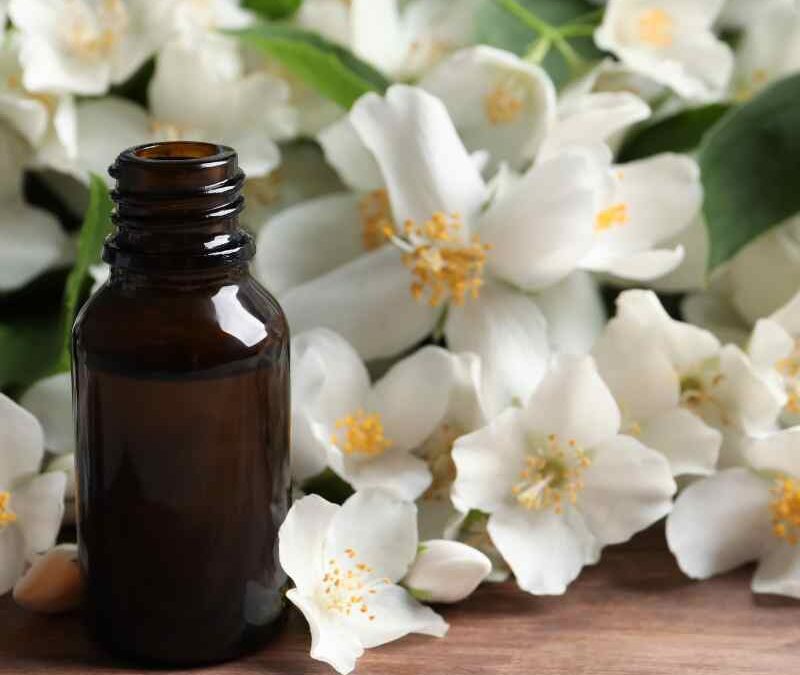Exploring the Enchanting World of the Most Expensive Essential Oils
Essential oils have become increasingly popular for their various uses and benefits. Some essential oils are known for their luxury and rarity, making them more expensive than others. In this blog post, we will take a closer look at the top five most expensive essential oils. We’ll explore their unique chemical components, potential benefits, factors influencing their prices, the importance of GCMS testing, and tips to make them last longer.
The Top Five Most Expensive Essential Oils
1. Rose Oil (Rose Otto)
- Extraction Process: Rose oil, also known as Rose Otto, is extracted from rose petals using a careful steam distillation process. This labor-intensive method contributes to its high cost.
- Key Chemical Components: Rose oil contains compounds such as geraniol, citronellol, nerol, and linalool, which contribute to its therapeutic properties.
- Benefits: Rose oil promotes relaxation, reduces stress and anxiety, nourishes the skin, and supports emotional well-being. More about Rose essential oil.
2. Agar-wood Oil (Oud Oil)
- Rarity and Production: Agarwood oil, also known as Oud oil, comes from the resinous heartwood of agarwood trees. These trees are scarce, and the production process involves infection and natural resin formation, making it highly prized.
- Key Chemical Components: Agarwood oil contains unique compounds like agarospirol and oudhone, which give it its distinctive fragrance and potential benefits.
- Benefits: Agarwood oil assists in meditation, relieves stress, enhances mood, supports mental clarity, and can have aphrodisiac properties.
3. Sandalwood Oil
- Source and Extraction: Sandalwood oil is extracted from the heartwood of sandalwood trees, primarily through steam distillation. The slow growth of these trees and the need for mature heartwood contribute to its higher price.
- Key Chemical Components: Sandalwood oil contains santalols, which give it its distinct aroma and potential therapeutic effects.
- Benefits: Sandalwood oil promotes calmness, reduces anxiety and stress, enhances meditation, and supports skin health. More about Sandalwood
4. Neroli Oil
- Source and Production Challenges: Neroli oil is extracted from the blossoms of bitter orange trees, which require specific conditions to flourish. This limited availability contributes to its higher cost.
- Key Chemical Components: Neroli oil contains compounds like linalool and linalyl acetate, which contribute to its fragrance and potential benefits.
- Benefits: Neroli oil calms the nervous system, alleviates anxiety, promotes better sleep, and supports skin health and rejuvenation.
5. Jasmine Oil
- Extraction and Production: Jasmine oil is extracted from the delicate flowers of the jasmine plant, and the process requires hand-picking the blossoms at night. This labor-intensive process contributes to its higher price.
- Key Chemical Components: Jasmine oil contains compounds like benzyl acetate and linalool, responsible for its captivating fragrance and potential effects.
- Benefits: Jasmine oil acts as an antidepressant, boosts confidence, has aphrodisiac properties, and supports skin health.
The Importance of GCMS Testing for Essential Oils
Essential oils are highly concentrated plant extracts, and their quality and authenticity are crucial. Gas Chromatography-Mass Spectrometry (GCMS) testing plays a vital role in ensuring the purity and chemical composition of essential oils. Here’s why GCMS testing is important:
- Identification of Chemical Composition: GCMS testing helps identify the individual chemical components present in an essential oil, ensuring its authenticity and quality.
- Ensuring Purity: GCMS testing detects any adulteration or contamination in essential oils, helping buyers make informed decisions about their purchase.
- Quality Assurance: GCMS testing provides a comprehensive analysis of the essential oil, allowing buyers to verify that they are getting a high-quality product.
Key Chemical Components of Expensive Essential Oils
The unique chemical components found in the most expensive essential oils contribute to their distinct fragrance and potential benefits. Here are some of the key chemical components:

essential oil benefits
- Rose Oil: Geraniol, citronellol, nerol, linalool
- Agarwood Oil: Agarospirol, oudhone
- Sandalwood Oil: Santalols
- Neroli Oil: Linalool, linalyl acetate
- Jasmine Oil: Benzyl acetate, linalool
The Benefits of Expensive Essential Oils
Expensive essential oils offer a range of potential benefits due to their unique chemical compositions. Here are some of their notable benefits:
- Rose Oil: Promotes relaxation, reduces stress and anxiety, nourishes the skin, supports emotional well-being.
- Agarwood Oil: Assists in meditation, relieves stress, enhances mood, has aphrodisiac properties.
- Sandalwood Oil: Promotes calmness, reduces anxiety and stress, enhances meditation, supports skin health.
- Neroli Oil: Calms the nervous system, alleviates anxiety, promotes better sleep, supports skin health and rejuvenation.
- Jasmine Oil: Acts as an antidepressant, boosts confidence, has aphrodisiac properties, supports skin health.
Factors Affecting the Prices of Essential Oils
Several factors contribute to the pricing of essential oils:
- Rarity and Availability: Some essential oils come from plants that are rare or have limited availability, making them more expensive.
- Extraction Methods: Labor-intensive extraction processes, such as steam distillation or hand-picking, can increase the cost.
- Quality and Purity: Essential oils of higher quality and purity tend to be more expensive due to the care and expertise involved in their production.
- Market Demand: Popular or trendy essential oils may have higher prices due to increased demand.
- Production Costs: Factors like farming practices, environmental conditions, and processing techniques influence the overall production costs.
Tips to Make Expensive Essential Oils Last Longer
To maximize the usage of your expensive essential oils and make them last longer, consider the following tips:
- Store them properly in dark glass bottles in a cool, dry place away from direct sunlight.
- Dilute essential oils with carrier oils before applying them to the skin.
- Use controlled dispensing methods such as droppers or roller bottles to prevent wastage.
- Experiment with blending different essential oils to create unique aromatic combinations.
- Apply essential oils sparingly, as a little goes a long way.
- Explore DIY projects like creating personalized perfumes or room sprays to extend their usage.
Conclusion:
Luxurious and rare, the most expensive essential oils offer an enchanting olfactory experience and potential therapeutic benefits. Understanding their unique chemical components, benefits, and factors influencing their prices can help you appreciate their value. Additionally, the importance of GCMS testing ensures the authenticity and quality of these precious oils. By following storage tips and mindful usage, you can make the most of your investment in these exquisite essences. Enjoy the indulgence and let these aromatic treasures elevate your well-being.
DIY Neroli Night-Time Skin Cream

DIY Neroli nighttime skin cream recipe
Ingredients:
- 1/4 cup shea butter
- 2 tablespoons coconut oil
- 1 tablespoon sweet almond oil
- 10 drops Neroli essential oil
- 5 drops lavender essential oil (optional for added relaxation)
- Glass jar for storage
Instructions:
- In a double boiler or a heat-safe bowl placed over a pot of simmering water, melt the shea butter and coconut oil together until fully melted and well combined.
- Remove the mixture from heat and let it cool for a few minutes.
- Add the sweet almond oil to the mixture and stir well.
- Allow the mixture to cool further until it reaches a semi-solid state. You can speed up the process by placing it in the refrigerator for about 15-20 minutes.
- Once the mixture has cooled and thickened, add the Neroli essential oil and lavender essential oil (if using). Stir thoroughly to distribute the oils evenly.
- Transfer the cream to a clean, airtight glass jar for storage. Make sure the jar is sterilized beforehand.
- Store the cream in a cool, dry place away from direct sunlight.
- To use, scoop a small amount of the cream and massage it gently into your skin before bedtime. Allow it to absorb fully before going to sleep.
Note:
- Perform a patch test on a small area of your skin before applying the cream all over your face to ensure there are no adverse reactions.
- If you have any known allergies or sensitivities to the listed ingredients, it’s best to avoid using this recipe.
Enjoy the luxurious scent of Neroli as you nourish your skin with this homemade night-time skin cream.
DIY Jasmine Perfume/Body Spray
Ingredients:
- 1/4 cup distilled water
- 1 tablespoon witch hazel
- 10-15 drops Jasmine essential oil
- Glass spray bottle
Instructions:
- Start by sterilizing your glass spray bottle by washing it with hot, soapy water and rinsing it thoroughly.
- In the glass spray bottle, combine the distilled water and witch hazel. The witch hazel helps to preserve the scent and blend the essential oil with the water.
- Add 10-15 drops of Jasmine essential oil to the mixture. Adjust the number of drops based on your preference for the strength of the scent.
- Close the spray bottle tightly and shake well to ensure the essential oil is evenly distributed.
- Allow the mixture to sit for at least 24 hours. This allows the scent to develop and mature.
- After 24 hours, your Jasmine perfume or body spray is ready to use!
- To apply, simply spray the perfume or body spray onto your wrists, neck, or desired areas. Avoid spraying directly onto clothing to prevent any potential staining.
Note:
- Since this is a natural homemade perfume, the scent may not last as long as commercially produced perfumes. You may need to reapply throughout the day to maintain the fragrance.
- Perform a patch test on a small area of your skin before applying the perfume or body spray all over to ensure there are no adverse reactions.
- If you have any known allergies or sensitivities to the listed ingredients, it’s best to avoid using this recipe.
Enjoy the alluring aroma of Jasmine with this homemade perfume or body spray. Feel free to experiment with different essential oil combinations to create your own unique fragrance blend.



